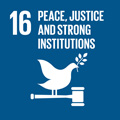- Docente: Pierfrancesco Callieri
- Credits: 6
- SSD: L-OR/16
- Language: Italian
- Teaching Mode: In-person learning (entirely or partially)
- Campus: Ravenna
- Corso: Second cycle degree programme (LM) in History, preservation and enhancement of artistic and archaeological heritage and landscape (cod. 9218)
Learning outcomes
The course concentrates on a monographic subject, different every year, treated on the basis of the historical, literary and archaeological sources, with the critical approach typical of scientific research. At the end of the course, the student has acquired the specific knowledge on the monographic subject; has developed autonomous attitude in respect of the large existing bibliography on the archaeology of Ancient Iran; has got the learning capabilities necessary to investigate with well-grounded basis the sources for an archaeological research.
Course contents
The course deals with a single theme of the archaeology of the pre-Islamic Iranian world, studied in a more detailed monographic perspective, with particular regard to criticism and methodology.
The theme of the course 2021-2022 is:
"Architecture of Power in Achaemenid Iran (6th-4th centuries BC)".
After briefly illustrating the construction techniques, materials, architectural typologies, styles and the periodization proposed so far of the architecture of the Iranian world of the Achaemenid period, the course will examine in a diachronic perspective the main testimonies of architectural complexes that, on the basis of the plan and the elevations, have been traced back to a function linked to royalty. The relationship between function and architectural typology will also be addressed by considering the symbolic aspects of architecture and of its decoration.
Summary of treated subjects
1 - Introduction to the history and archaeology of the Achaemenid period
2 - Materials and techniques. Architectural typologies. Periods and styles
3 - Pasargadae
4 - Pasargadae
5 - Tol-e Ajori
6 - Borazjan
7 - Persepolis
8 - Persepolis
9 - Naqsh-e Rostam
10 - Susa
Readings/Bibliography
Texts/Bibliography
The course presupposes a basic knowledge of the archaeology of Iran in the Achaemenid period, as provided by the course "Archaeology and History of Iranian Art" for the bachelor degree in Cultural Heritage. For those who do not have this basic knowledge, it is recommended to study the first three didactic sections of that course (Introduction, Age of the Medes, Age of the Achaemenids), available on-line at https://virtuale.unibo.it/course/view.php?id=20604#section-3. The following bibliography is provided especially for students who will not be able to attend the course.
Attending students:
Since the course, due to its distinctly monographic character, will see the teacher develop the subject in a highly innovative perspective, for the preparation of the exam the attending students, in addition to the possible preparation of basic knowledge of the archaeology of Iran in the Achaemenid period through the above mentioned on-line materials, will be able to use the slides projected during the lessons, in addition to the texts that will be indicated by the teacher.
Non-attending students:
Texts indicated for the preparation of the examination by non-attending students:
1 - The first three didactic sections of the course of "Archaeology and History of Iranian Art" for the three-year degree in Cultural Heritage (Introduction, Age of the Medes, Age of the Achaemenids), available online at https://virtuale.unibo.it/course/view.php?id=20604#section-3
2 - R. Boucharlat, “The Palace and the Royal Achaemenid City : two cases- studies - Pasargadae and Susa”, in I. Nielsen (ed.), The Royal Palace Institution in the First Millennium BC (Monographs of the Danish Institute at Athens Volume 4), Athens 2001, pp. 113-123.
3 - R. Boucharlat, “Iran”, in P. Briant & R. Boucharlat (eds.), L’archéologie de l’empire achéménide : nouvelles recherches (Persika 6), De Boccard, Paris 2005, pp. 221-292.
4 - J. Curtis & N. Tallis (eds.), Forgotten Empire. The world of Ancient Persia, The British Museum, London 2005.
5 - R. Boucharlat, “Soutwestern Iran in the Achaemenid Period”, in D.T. Potts (ed.), The Oxford Handbook of Ancient Iran, Oxford University Press, New York 2013, pp. 503-527.
6 - P. Callieri, “Terra e pietra nell’architettura dell’Iran degli imperi pre-islamici”, in P. Callieri & A.V. Rossi (eds), Civiltà dell’Iran: passato, presente, futuro, ISMEO, Roma 2018, pp. 87-98.
7 - A. Askari Chaverdi & P. Callieri, “Tol-e Ajori and Takht-e Jamshid: a Sequence of Imperial Projects in the Persepolis Area”, in East and West 1/1, 2020, pp. 177-204.
Teaching methods
Lessons with direct and critical examination of the iconographic documentation through slideshows and distribution of plants and graphs. The aim of the course is to introduce the student to the main problems of the proposed research theme. The emphasis is on the methodological approach to the research proposed, in order to stimulate critical reflection by the student.
For these reasons, frequency to the lessons, although not mandatory, is highly recommended.
Assessment methods
Oral examination. The exam will begin with the presentation of a topic of the student's choice among those covered, and the exam will continue with at least five other questions asked by the teacher.
The oral interview aims to assess the acquisition of basic knowledge in the subject matter of the monographic course, giving for acquired a solidity of the chrono-geographical reference framework of each site and monument. The acquisition of specialist language is considered a necessary requirement for passing a Master course exam. The final vote will be based on the evaluation as a whole.
The purpose of the exam is also to verify the methodological and critical skills acquired by the student. Given the importance of attending the lessons, two different evaluation parameters will be adopted, for students attending and for students not attending.
Attending students
The frequency will influence the final evaluation with 30%.
In particular, the student's ability to actively participate in the lessons will be evaluated; these skills, added to the achievement of an exhaustive understanding of the subject matter dealt with during the lessons, with the demonstration of critical sense and with appropriate means of verbal expression, will be evaluated with the highest scores excellent = A (27-30 cum laude).
Attendance, associated with a predominantly mnemonic acquisition of the subject matter of the course and verbal expression and logical skills not fully satisfactory, will be evaluated with scores between good (B = 24-26) and satisfactory (C = 21-23).
Attendance, associated with a minimum acquisition of the subject matter of the course and inadequate verbal expression and logical skills, will be evaluated with a sufficient score (D = 18-20).
The absence of a minimum acquisition of the subject matter of the course combined with verbal expression and inadequate logical skills, will be evaluated with insufficient score (E), even in the presence of an assiduous attendance.
Non-attending students
Non-attending students will be assessed primarily on their ability to use the indicated bibliography to appropriately present the course content. This ability, added to the achievement of an exhaustive understanding of the subject matter dealt with in the course of the lessons, with the demonstration of critical sense and with appropriate means of verbal expression, will be evaluated with the highest scores excellent = A (27-30 cum laude).
A predominantly mnemonic acquisition of the subject matter of the course, with verbal expression and not fully satisfactory logical skills, will be evaluated with scores between good (B = 24-26) and satisfactory (C = 21-23).
A minimum acquisition of the subject matter of the course, with verbal expression and inadequate logical skills, will be evaluated with a sufficient score (D = 18-20).
The absence of a minimum acquisition of the subject matter of the course combined with verbal expression and inadequate logical skills, will be evaluated with insufficient score (E).
Teaching tools
During the on-line lessons, slides and graphs projection.
Office hours
See the website of Pierfrancesco Callieri
SDGs



This teaching activity contributes to the achievement of the Sustainable Development Goals of the UN 2030 Agenda.
